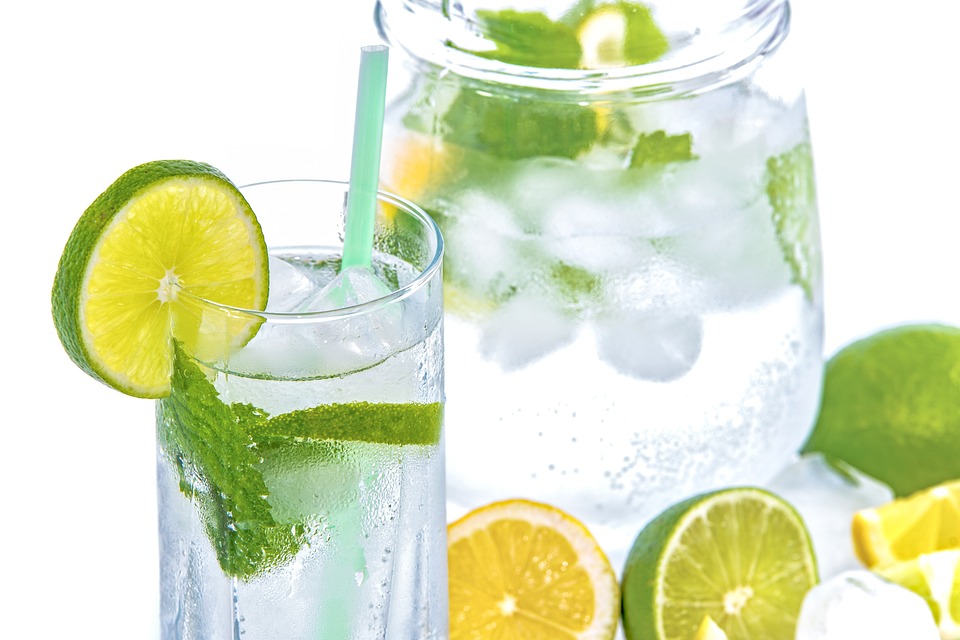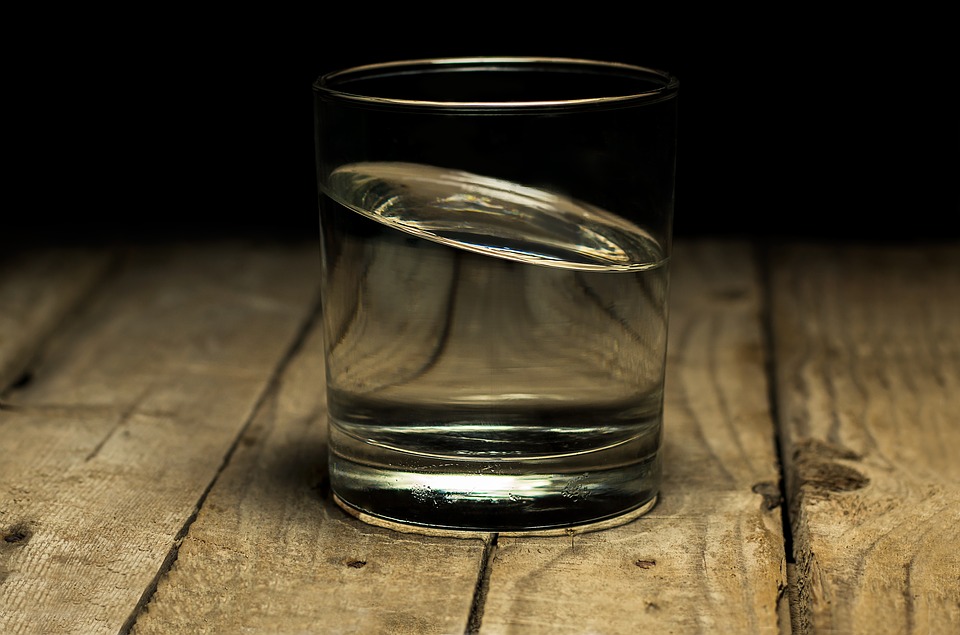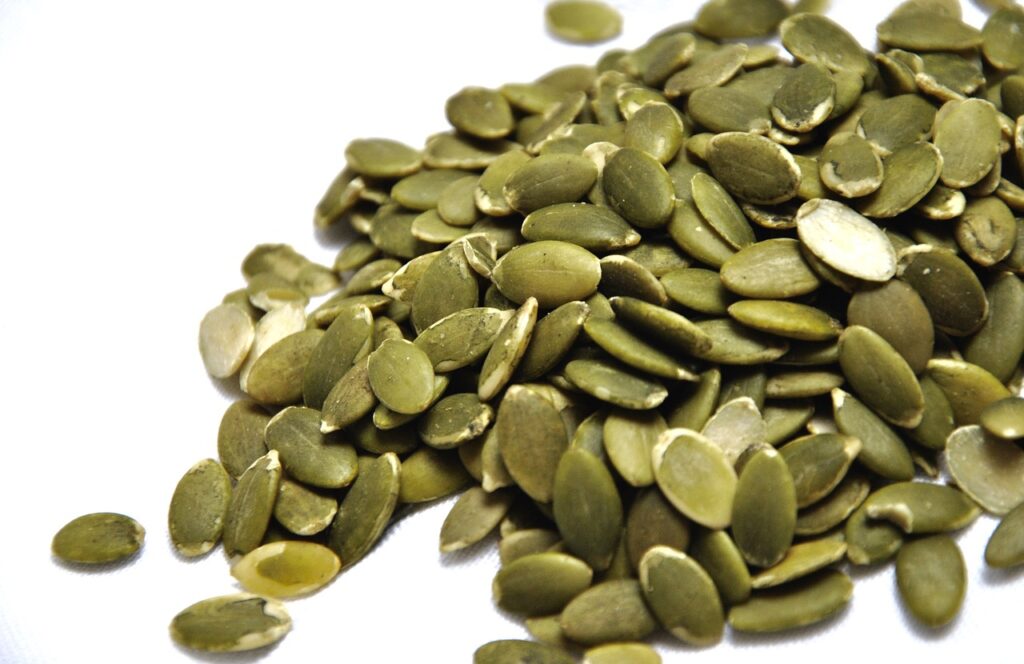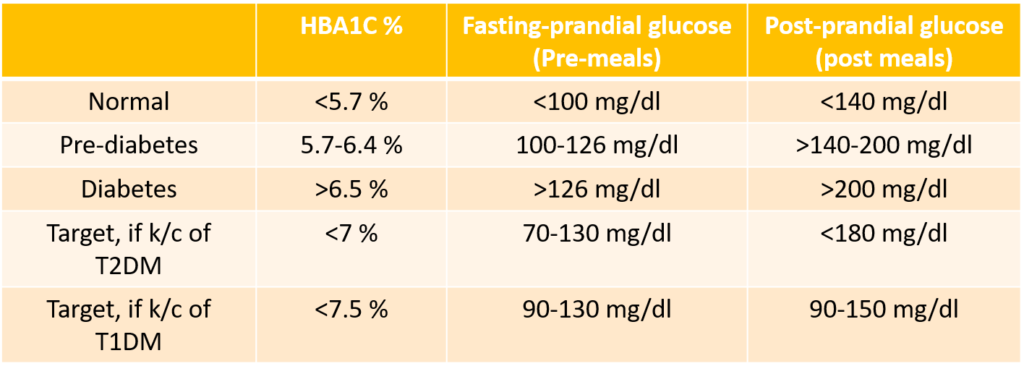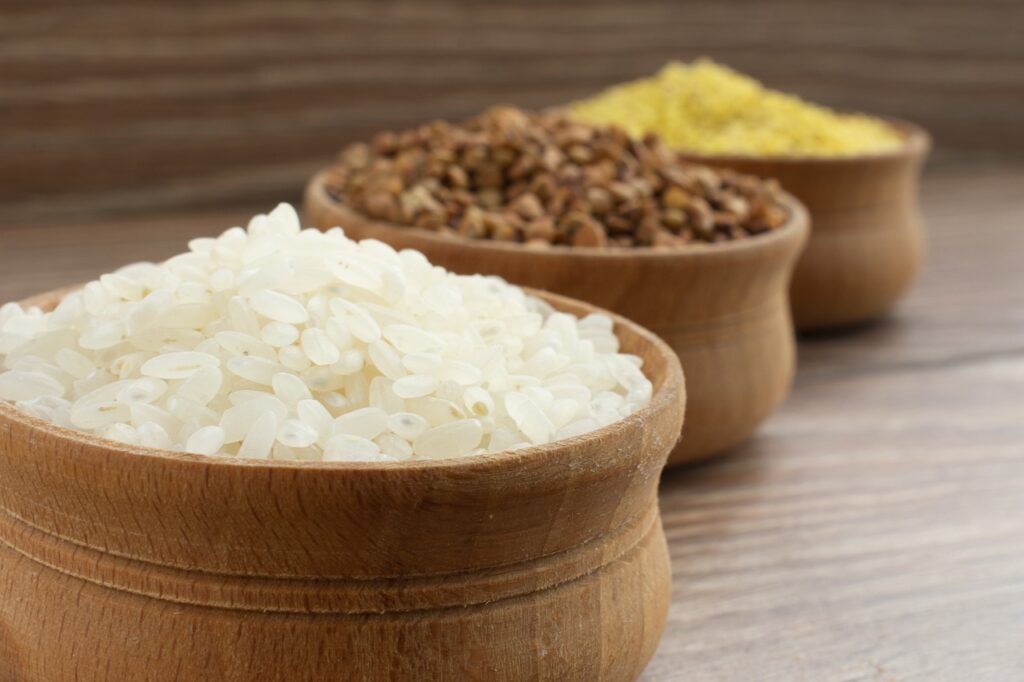Korean, Japanese/Chinese South Asian diet for weight loss
South Asian diet and flavors are mouth-watering and worth giving a try for weight loss. In this article, we will be talking about different asian diets that may be helpful for your weight loss.
Let’s first talk about Korean diet.
Korean diet/South Asian Diet:
Recently, K-dramas and K-pop band such as BTS, Stray kids, Blackpink, etc. have taken over the entire world in many ways. People are curious about Korean culture, cuisines, fashion, the secret to their beautiful skin, the answer to their healthy lifestyle and much more.

What is Korean diet/South Asian Diet?
The Korean diet is a whole foods-based diet which is inspired by traditional Korean cuisine. It promotes eating whole, minimally-processed foods while limiting the intake of overly processed ones. It also recommends avoiding foods containing wheat, dairy, refined sugars, and excess fat.
In other words, this diet is all about cutting down on fried, fatty and sugar-containing foods. It focuses on foods that are rich in protein such as meat, chicken, seafood and a variety of vegetables and rice. Also, it includes kimchi, a fermented cabbage dish that’s a staple in Korean cuisine.
Why Korean diet is useful in weight loss?
When it comes to weight loss, the Korean weight loss diet in South Asian Diet has gained much momentum recently. Being delicious and lip smacking, it is also extremely healthy, nutritious and well-balanced. It includes whole foods that are rich in fibre and other nutrients and limits foods that are processed, rich in fat and sugar.
Furthermore, the Korean meal is incomplete without colorful and fresh vegetables. Most of these vegetables are high in nutrients which makes them a perfect healthy dish. They contain a good amount of fiber which provides your stomach with satiety and promotes weight loss by making you full for longer time and by reducing the craving for food. Also, since vegetables contain low amounts of fat and carbs, a Korean diet is therefore perfect for people looking to slim down.
Moreover, the diet not only involves a set of food to include in your diet but but also lays down an exercise routine that guarantees effective weight loss. Also, K-Pop diet can also clear up your skin and optimise your long-term health.
How to follow Korean diet?
To follow a proper Korean diet, you should follow the point written below:
- Eat fewer calories: There is no limit on the portion size and daily calories in this diet. So one can opt for Korean dishes such as soups and vegetables which provides less calories. This diet encourages people practice mindful eating.
- Exercise regularly: Exercising is one of the most essential key during this diet. K-pop workouts are provided for this purpose.
- Reduce fat intake: Limit oily and fried foods and avoid sauces, oils, and seasonings whenever possible. Hence, steamed food will be essential in preparation of vegetables and even meats.
- Minimize added sugars: When it comes to Korean diet, sweetened foods like candy, sugary snacks and beverages are all restricted. As sugars are empty calories without zero nutrition, this can lead to massive weight gain.
- Fermented foods: Fermented foods form an essential part of the Korean diet. Foods like Kimchi, Miso, Tempeh helps to boost gut health.
- More chicken and fish, less red meat: Red meat is common in a Korean diet but the weight loss diet focuses more on chicken and fish as animal proteins. For vegetarians, soy products such as tofu, edamame may be incorporated into meals.
- Avoid snacks: Snacks are considered unnecessary on this diet and should be avoided. Even if you are fond of snacking, but by following this diet for weight loss, you will have to give up the habit of snacking.
What you need to do to follow the Korean diet?
Like any other diet for weight loss, there is also specific food that should be taken and that should be avoided. So, let’s first have a look at the foods that should be taken in the diet.
Vegetables:
There is no limit for the vegetables consumption in Korean diet. You can eat them raw, cooked, or fermented, such as in the case of kimchi or soups.

Fruit:
You can take any fruit you like as they are a great natural substitute for sweets.

Protein:
Protein is a must in Korean diet. It includes both animal and plan sources of protein. Animal sources are eggs, meat, and seafood. Plant sources include tofu, dried shiitake, and king oyster mushrooms.

Carbohydrates:
Korean diet is low in carbohydrates. Thus, this diet contains minimal carbs options. Rice is a staple food of Korea. You can include white rice or rice noodles in your diet. Also, dumplings, pancakes, or glass noodles made from mung bean, potato, or tapioca starch constitute great alternatives to rice.

Now, let’s have a look at the food that should be restricted/avoided in the diet to promote weight loss.
Wheat-containing foods:
Korean diet rarely includes products such as bread, pasta, breakfast cereals, pastries, or wheat-based flours of any kind.

Dairy:
The dairy and its products such as milk, cheese, yogurt, ice cream, and any baked goods containing dairy as they are the sources of saturated fat.

Fatty foods:
Foods like red meat, fried foods, sauces, oily seasonings, or foods cooked in oil should be avoided.

Processed or sugary foods:
The sugar-containing products such as candy, soft drinks, baked goods, or any other foods containing added sugars should be avoided as they are just empty calories in South Asian diet.

5-day sample Korean diet plan:
Day-1
Breakfast: Vegetable omelet with toast
Lunch: Kimchi-vegetable soup with pork or tofu
Dinner: Rice + Soup or Stew + Kimchi+
Day-2
Breakfast: Korean vegetable pancakes with dry pollock soup
Lunch: Bibmbap (made with rice, egg, vegetables, and meat or tofu) with seaweed soup
Dinner: Japchae with spicy cucumber and bok soy salad
Day-3
Breakfast: Kimchi scrambled eggs with toast
Lunch: Chicken porridge (dakjuk)
Dinner: Kimbap with soyabean paste tofu stew
Day-4
Breakfast: Korean jeon (pancakes), boiled egg
Lunch: Kimchi fried rice with chicken stew
Dinner: Rice cake soup with bean sprouts
Day-5
Breakfast: Kim gyeran mari (seaweed egg roll) with kimchi stew
Lunch: Black bean noodles
Dinner: Kimchi mandu soup with steamed or raw vegetables
Japanese diet:
Japan has one of the world’s lowest obesity rates and also have highest life expectancy rates? Yes, you heard it right and their secret lies in the food they consume. Let’s understand about Japanese diet and how it is helpful in weight loss.

What is the Japanese diet in the south Asian diet?
The Japanese diet is a whole-foods-based diet rich in seafood, and plant-based foods such as fresh, cooked, or pickled fruits and vegetables with minimal amounts of processed foods, animal protein, added sugars, and fat.
Moreover, this style of eating also emphasizes on dishes of natural flavors without using sauces or seasonings.
Why Japanese diet is helpful in weight loss?
A traditional Japanese diet is healthy and well-balanced. It consists of grains, plenty of green vegetables, omega-rich fish and minimal amounts of meat, dairy and fruit. The diet also includes light carbs and herbal tea. Basically, the Japanese diet can give you everything you need for losing or maintaining the perfect weight, beauty and health.
Let’s discuss the benefits of Japanese diet in detail!
It features plenty of green vegetables, which are brimming with nutrients and essential antioxidants that may prevent diseases and boost overall health. They contain high levels of nutrients, Vitamin C and dietary fibre, all of which help with weight loss and overall health. Moreover, their methods of cooking vegetables include light steaming, which is a great way to cook veggies without losing nutrients.
Everyone knows that the Japanese diet in the south Asian Diet includes a variety of seafood, particularly fish. It is high in good quality protein, omega-3 fatty acids, and many other important nutrients. And this omega-3 fatty acids helps to reduce excess fat in the body, especially belly fat, and improve brain and cardiovascular health and promotes healthy, glowing and smooth skin.
The Japanese eat less red meat, which is high in saturated fats. Also, many high-fat foods such as baked goods, junk food contain high amounts of saturated fats that can add extra calories to your diet, making you gain weight. Thus, by reducing it’s consumption, this diet is promoting a good weight loss among people.
Japanese diet also include herbal tea. These herbal tea are very famous in Japan. These tea are full of antioxidants that may help you in weight loss.
In Japan, food is generally served on small plates and bowls instead of one big plate which helps in portion control. Moreover, people use chopsticks to eat food in small bites. In addition, Japanese culture encourages eating until only 80% full. This practice helps to prevent overeating and may contribute to the calorie deficit diet.
How to follow the traditional Japanese diet?
A typical Japanese diet consists of staple food rice, a main dish, soups, fermented pickles, protein (mainly fish) and vegetable side dishes.
- Staple food: It includes steamed rice or soba, ramen, or udon noodles.
- Soup: Typically includes a miso soup made with seaweed, shellfish, or tofu and vegetables in a fermented soybean stock. Also, vegetable soups or noodle soups are other popular options in Japanese diet.
- Main dish: It includes fish, seafood, tofu, or natto (a traditional Japanese food of fermented soybeans) with small portion of meat, poultry, or eggs.
- Side dishes: It incudes vegetables which can be raw, steamed, boiled, sauteed, grilled, or pickled, wild plants, seaweed, and raw or pickled fruit.
- Stay hydrated: Water is 100% calorie-free which helps you to burn more calories. The benefits are even greater when you replace sugary beverages with water. It is a very easy way to cut back on sugar and calories.
- Low sugar intake: Japanese diet restricts the consumption of sugar. Sugar have high energy which contributes to weight gain. You should read labels of the things that you consume to reduce your sugar intake. Also, pastries, biscuits, cakes, processed cereals, alcoholic beverages and sugary fizzy beverages should be avoided as much as possible.
- Reduce fat intake: You should avoid foods such as pies, lard, butter, cream, sausage, biscuits, cakes and hard cheese as they all are rich in saturated fat.
What you need to do to follow the Japanese diet?
To follow the Japanese diet, you need to keep in mind the food that are suitable to include for the weight loss and foods that should be avoided.
So, let’s first have a look at the foods that you can include in the diet.
Fish and seafood:
All types of fish and seafood can be included. These can be steamed, baked, grilled, or raw. For instance, sushi. It is a most famous Japanese dish. It is a staple fish dish of Japanese cuisine made up of raw seafood and served cold.

Soy foods:
Soy foods are also common in Japanese diets. The most common are edamame, tofu, miso, tamari, and natto.

Fruit and vegetables use in South Asian Diet:
Fruits can be eaten either raw or pickled while vegetables can be steamed, sauteed, pickled, in broth, or added to soups.
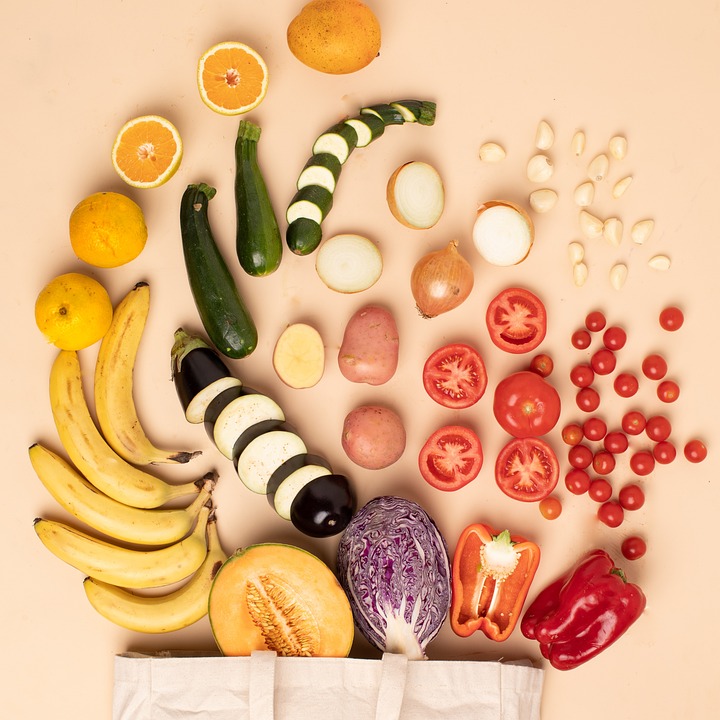
Seaweed:
Seaweed is called Nori in Japanese and is a big part of the traditional Japanese diet. They can be eaten raw or dried. For instance, in sushi roll, seaweed salad, seaweed soups, etc.

Rice or noodles:
Steamed rice is a staple in a traditional Japanese diet. Other popular options include soba, ramen, or udon noodles served chilled or in a hot broth.

Beverages:
Herbal tea and cold barley tea are the main beverages which are included in the diet and provides great health benefits.

The traditional Japanese diet include the restriction or avoidance of the following foods:
- Dairy: It includes butter, milk, cheese as they are the sources of saturated fat.
- Red meat and poultry: The red meat such as beef, pork, duck, etc. are the sources of the saturated fat which should be minimizes as much as possible from the diet.
- Eggs: Lower your consumption of egg.
- Excess fats, oils, and sauces: It includes margarine, cooking oils, dressings, fat-rich sauces, etc.
- Baked goods: It includes bread, pita, tortillas, croissants, pie, brownies, muffins, etc.
- Processed or sugary foods: It includes breakfast cereals, granola bars, candy, soft drinks, etc.
5-day sample Japanese diet plan:
Day-1
Breakfast: Miso soup, steamed rice, natto (fermented soyabean), and seaweed salad
Lunch: Soba noodles (buckwheat noodles) with broth, grilled tuna, kale salad
Dinner: Fish cakes, clear soup with cabbage and egg
Day-2
Breakfast: Rice, Japanese rolled omelet, miso soup with cabbage and bean sprouts
Lunch: Clam soup, rice balls wrapped in seaweed, marinated tofu, and a cooked-vegetable salad
Dinner: Sushi with vegetable salad and seaweed soup
Day-3
Breakfast: Grilled fish, rice, seaweed salad, pickled vegetables
Lunch: Fried rice, seaweed soup and steamed vegetables
Dinner: Sushi, blanched chinese cabbage with dried shrimp in broth, pickled vegetables
Day-4
Breakfast: Raisin bread, omelet, grilled sausage, fruit
Lunch: Rice, mackerel simmered with miso, soybeans stew with mixed vegetables
Dinner: Mushroom soup, rice cakes, seared scallops, and steamed vegetables
Day-5
Breakfast: Japanese rolled omelette, tofu stew with vegetables, seasoned seaweed
Lunch: Kitsune udon (udon noodles with aburaage), miso soup and seasoned vegetables
Dinner: Rice, chikuzen-ni (root vegetables simmered with chicken), miso soup with spinach and aburaage
Chinese diet:

What is Chinese diet/ The South Asian Diet type?
in South Asian diet, Chinese diet is low in fat, low in calorie but contains abundant fiber, proteins, vitamins and other nutrients. The diet consists of vegetables that have been steamed or stir fried, accompanied by starches like rice, noodles or dumplings. Meat and fish are part of the traditional diet but are served in much smaller amounts than typical Western diet. Herbal tea which contains antioxidant qualities is also a prominent part in the Chinese diet.
As most of the Chinese are lactose intolerance, Chinese do not consume large amounts of dairy products. Therefore, they substitute these with soymilk and tofu, which also contain large amounts of protein and calcium.
Why Chinese diet is helpful in weight loss?
According to Chinese medicine, eating a lot of acidic foods, spicy and bitter one are beneficial for your health because those foods are good for weight loss as compared to salty, sugary and fatty foods which enhance weight gaining. But by combining healthy diet with body exercises, it can lead to weight loss.
Let’s have a quick look at what kind of food Chinese diet includes!
Chinese people eats varieties of noodles, for instance, mung bean noodles. This mung bean contains antioxidative properties, low in calorie and are a gluten free alternative to noodles. It also includes vegetables such as Pak Choi cabbage which is a part of the detox diet foods and promotes digestion and is rich in vitamins A and antioxidants. Sesame seeds are a part of their daily diet which effectively protect liver cells against the harmful effects of alcohol and other chemicals. They are a good choice for a body cleanse. Moreover, Chinese diet includes ginger which is a powerful digestive aid, a natural anti-inflammatory rich in antioxidants.
All these nutrients, antioxidants and toxin cleansing properties of Chinese diet not helps in effective weight loss but also provides numerous health benefits.
How to follow the Chinese diet in the South Asian Diet?
There are numerous factors that you need to keep in mind in order to follow the Chinese diet. Here are some tips for you!
Eat a balanced meal:
Chinese meals are often well balanced. Their rice or noodles are always paired with meat and vegetable that helps to maintain the carbohydrate-protein-fat combination. The fresh vegetables supply all the minerals and vitamins for your body. By steaming, boiling or stir-frying these vegetables can help to keep their nutritive properties.
Eat fresh vegetables:
Vegetables are must in any Chinese food. They add them to the almost every meals of the day, for instance, as side-dishes or in soups. These vegetables makes the food attractive and it is also full of all the nutrition that you need.
Steam your food instead frying it:
Chinese food is not all about stir or deep frying the food. They often steam their vegetables and other dishes. This technique of cooking with mild seasoning will not only refresh the palate but also give your body the right nutrients.
Soup is a must:
Soups are a must for the Chinese diet. You can make soups with fresh vegetables, chinese herbs, broth (plant or animal-based) and mild spices are great for a healthy weight loss. It not only supplies the necessary nutrients, but also gives you satiety and prevents over-eating.
Three meals in a day:
Chinese people take their meal times seriously and they eat no more than three times a day. Their breakfast is most important meal of the day and they never skip it. Following this three meals a day rule can keep you away from snacking and binge-eating. This is very helpful in weight loss.
Herbal tea:
Herbal teas are important part of their daily life. These tea not only help you in relaxation but also have multiple detox ingredients that helps you to loose weight. The most easily available and effective variant is green tea. You can easily incorporate this in your daily routine.
Use small bowls for your meals:
Chinese people eat everything out of the bowl instead of a plate. This helps them to keep the portion sizes in check and eat less.
No snacking:
Chinese people are not big fans of snacking. They do not eat in-between meals. They maintain a strict uniform routine of eating food. Always make sure that your are full enough when you are eating the major meals. Do not eat anything in-between which will provide your body with fasting windows and you will definitely lose the extra kilos.
Eat in groups/Eat as a family:
Eating with your with your friends or family has a lot of benefit. For instance, you take your time to eat; you chew your food well which helps in better digestion and you do not overeat while staring at the T.V. or at your mobile phone. While you eat together you also share your meal, especially the rice or noodle which is the main source of carbohydrate and this helps you to keep the carb intake in check.
(Source: https://makeupandbeauty.com/10-chinese-diet-tips-weight-loss/)
What you need to do to follow the Chinese diet?
The Chinese diet is rich in plant-based foods, emphasizing vegetables, grains, and beans. Animal protein sources are low on the food pyramid and are consumed in smaller amounts.
So, let’s first have a look at the foods that should be taken in the diet.
A traditional Chinese diet includes the following foods:
- Vegetables like broccoli, kale, cauliflower, cabbage, bok choy, carrots, spinach, sea vegetables (seaweed), and lettuce
- Fruits such as apples, bananas, pears, oranges, and melons
- Whole grains such as brown rice or whole-grain pasta, or noodles
- Beans such as tofu or edamame (soybeans)
- Fish such as salmon or halibut
- Poultry such as duck or chicken
Meat dishes are side dishes rather than main courses and are served with other vegetable or grain dishes.
So, let’s first have a look at the foods that should be avoided in the diet.
- Red meat such as pork and beef.
- Refined sugars and carbohydrates. Instead of sweetening your food with sugar or bread and cereal products, eat rice as a source of carbohydrates.
- Deep fried dishes, egg rolls, fried rice, fried wanton, crispy noodles.
- High calorie curries like Thai curries cooked with coconut cream.
- Regular sodas, juices and energy drinks.
5-day sample Chinese diet plan:
Day-1
Breakfast: Rice vermicelli in soup with shredded chicken and bok choy, two boiled eggs
Lunch: Pan-fried chicken breast salad in olive oil with raw/sauteed vegetables
Dinner: Noodles in pork bone and lotus root soup, fish-paste-stuffed tofu, stir-fry celery
Day-2
Breakfast: Scrambled eggs with tomato and toast
Lunch: Grilled chicken with sweet corn soup
Dinner: Steamed fish with mushrooms and bok choy
Day-3
Breakfast: 1 boiled egg, steamed broccoli and 2 slices multi-grain bread
Lunch: Schezwan chili chicken with seaweed soup
Dinner: Rice, steamed fish with green onions and choy sum
Day-4
Breakfast: Steamed dumplings with stir-fried green vegetables
Lunch: Stir-fried tofu with rice
Dinner: Rice, braised chicken with potatoes and eggplant
Day-5
Breakfast: Oatmeal, steamed and seasoned broccoli and boiled egg
Lunch: Steamed Noodle with sesame paste and broth
Dinner: Chicken soup, egg fried rice, stir-fry celery
If you are struggling shedding weight. You can talk to us by taking this assessment: Click here
For more information click here







